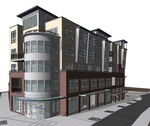
One of the biggest hurdles has been making it possible for existing 3D models to be printed, even though they might be in different formats. A variety of viewers and export tools are emerging to address that growing need.
One interesting tool is the STL Exporter for Revit Platform 2009, which enables current Autodesk 3D designs to be converted into a form suitable for most 3D printers. It extracts 3D information from Autodesk’s integrated Revit format and produces an STL file, leaving behind all the other non-3D information behind. According to wikipedia:
Revit is a single file database that can be shared among multiple users. Plans, sections, elevations, legends, and schedules are all interconnected, and if a user makes a change in one view, the other views are automatically updated. Thus, Revit drawings and schedules are always fully coordinated in terms of the building objects shown in drawings.
Via Bim & Beam

